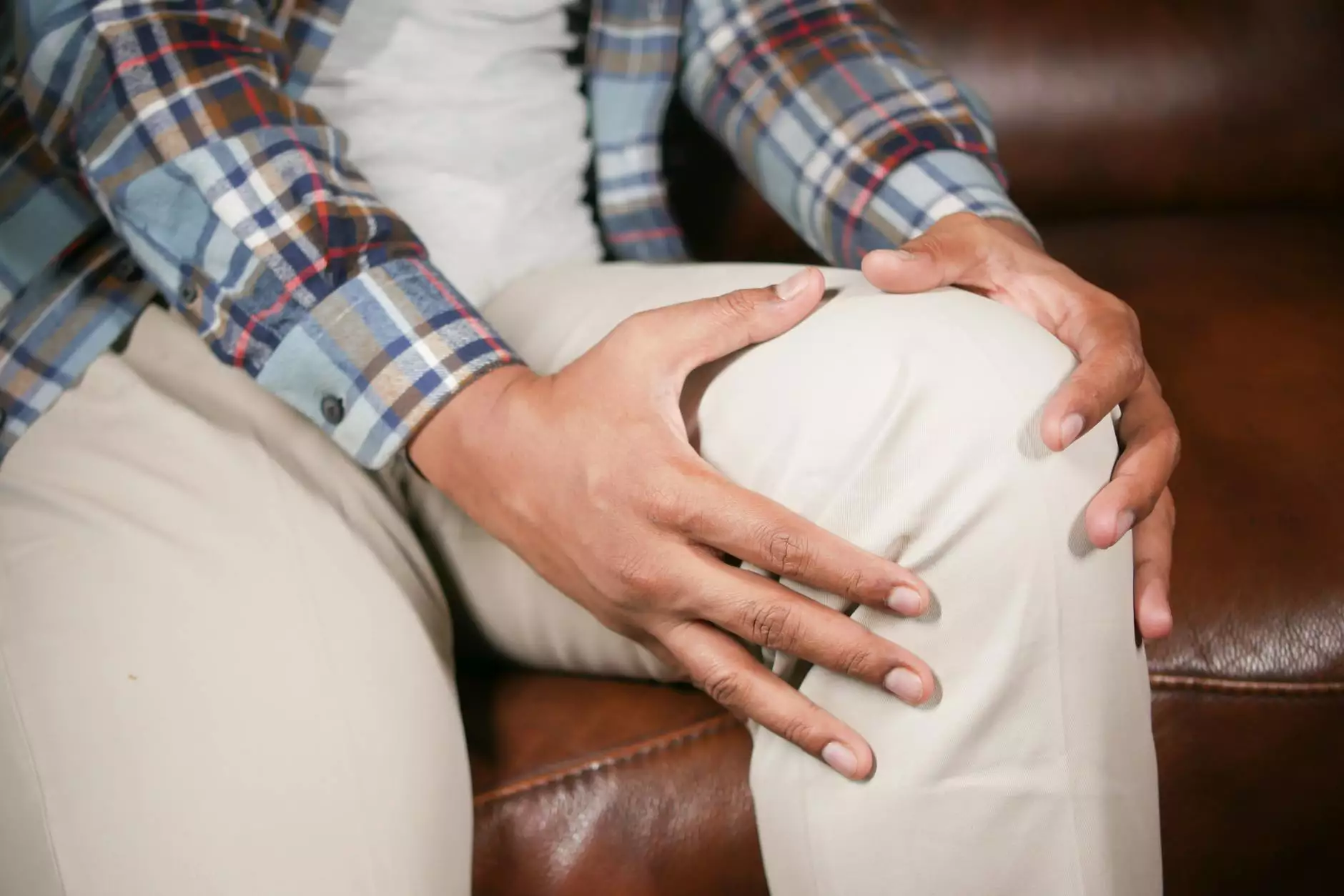What Causes Knee Pain When Standing Up After Sitting?
Services
Are you experiencing knee pain when standing up after sitting? You're not alone. Many individuals suffer from this discomfort, and it can be frustrating to deal with on a daily basis. In this comprehensive guide, we will explore the various causes of knee pain when standing up, and how Dr. Benjamin Shettell, a renowned physician specializing in bone, joint, and muscle health, can assist in diagnosing and treating this condition effectively.
The Importance of Healthy Bones, Joints, and Muscles
Bones, joints, and muscles work together to provide support, mobility, and stability to our bodies. Maintaining their health is crucial for overall well-being and an active lifestyle. However, when problems arise, such as knee pain when standing up after sitting, it can significantly impact our daily activities.
Common Causes of Knee Pain When Standing Up
1. Osteoarthritis
Osteoarthritis is a degenerative joint disease that affects millions of people worldwide. It occurs when the protective cartilage that cushions the ends of bones deteriorates over time. When you stand up after sitting for a while, the pressure on the knee joint can cause pain and discomfort.
2. Patellofemoral Pain Syndrome
Patellofemoral Pain Syndrome, also known as runner's knee, is a condition characterized by pain in the front of the knee. It often occurs when the patella (kneecap) is not properly aligned, causing increased pressure on the joint when standing up. Dr. Benjamin Shettell can provide expert diagnosis and create a tailored treatment plan to alleviate this condition.
3. Ligament Injuries
Injuries to the knee ligaments, such as the anterior cruciate ligament (ACL) or medial collateral ligament (MCL), can lead to knee pain when standing up after sitting. These ligaments provide stability to the knee joint, and any damage can result in pain and difficulty with movement.
4. Meniscus Tears
The meniscus is a C-shaped cartilage in the knee that acts as a shock absorber between the thighbone and shinbone. When it gets torn due to injury, the knee may experience pain and discomfort when standing up after prolonged sitting.
5. Bursitis
Bursitis occurs when the bursae, small fluid-filled sacs that cushion the joints, become inflamed. Inflammation can be caused by repetitive motions, prolonged kneeling, or direct trauma to the knee. When you stand up after sitting, the inflamed bursa can cause pain and stiffness in the knee.
Diagnosis and Treatment Options
It is crucial to seek professional medical advice if you are experiencing knee pain when standing up after sitting. Dr. Benjamin Shettell, MD, with his expertise in bone, joint, and muscle health, can accurately diagnose the underlying cause of your knee pain and recommend the most appropriate treatment options to relieve your discomfort.
Diagnostic methods may include physical examinations, imaging tests (X-rays, MRI scans), and potentially joint fluid analysis. Based on the diagnosis, Dr. Shettell may recommend a combination of non-surgical approaches such as medication, physical therapy, and lifestyle modifications to manage your knee pain effectively.
In some cases, surgical intervention may be necessary, and Dr. Shettell is highly skilled in various surgical techniques to provide long-term relief. These procedures may include knee arthroscopy, ligament reconstruction, or meniscus repair.
Preventing Knee Pain When Standing Up
While treatment options are available, it is always better to prevent knee pain when standing up after sitting in the first place. Incorporating certain habits and lifestyle changes can help maintain the health of your knees and joints.
1. Maintain a Healthy Weight
Excess weight puts additional stress on your knees when standing up, increasing the risk of pain and discomfort. Maintaining a healthy weight through a balanced diet and regular exercise can significantly reduce the pressure on your knee joints.
2. Strengthen the Muscles Surrounding the Knee
Strong muscles around the knee can provide better support and stability, reducing the strain on the joint. Incorporate exercises that target the quadriceps, hamstrings, and calf muscles into your routine for optimal knee health.
3. Avoid Prolonged Periods of Sitting
Try to take breaks and avoid sitting for extended periods. When sitting, use proper ergonomic support for your knees, such as a cushion or an adjustable chair that allows you to maintain proper posture.
4. Use Correct Technique When Exercising
When engaging in physical activities or sports, ensure you use proper form and technique. Incorrect movements can put unnecessary stress on your knees, leading to pain and potential injury. If you are unsure, consult a professional trainer or seek guidance from Dr. Benjamin Shettell.
Expert Care for Knee Pain When Standing Up After Sitting
Dr. Benjamin Shettell, MD, an esteemed specialist in bone, joint, and muscle health, understands the challenges associated with knee pain when standing up after sitting. With his comprehensive diagnostic approach, cutting-edge treatments, and a focus on patient care, Dr. Shettell can help you find relief and restore your knee's functionality.
Don't let knee pain limit your daily activities any longer. Contact Dr. Benjamin Shettell today to schedule a consultation and take the first step towards better joint health.




